 |
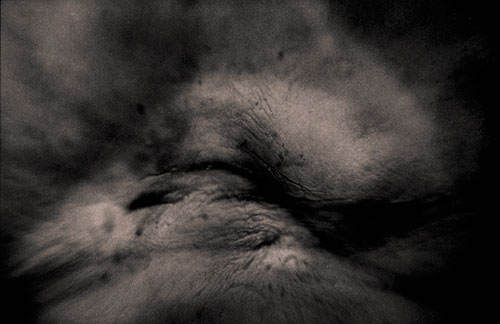 |
|
Magda Hueckel - Obsessive Self-Portraits 12 |
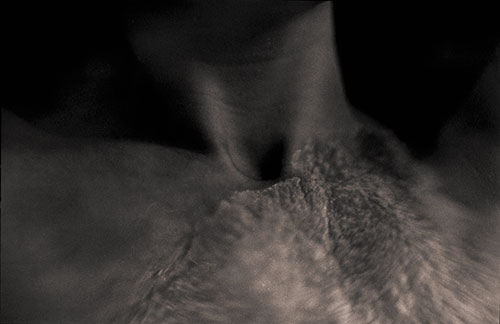 |
|
Magda Hueckel - Obsessive Self-Portraits 15 |
 |
|
Magda Hueckel - Obsessive Self-Portraits 10 |
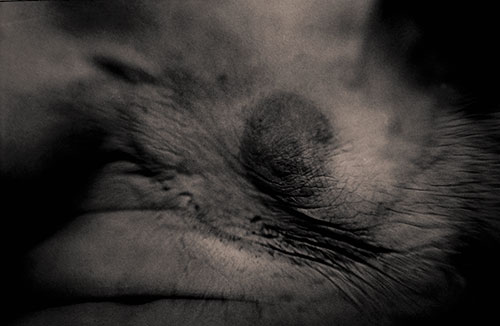 |
|
Magda Hueckel - Obsessive Self-Portraits 11 |
| Obsessive Exodus |
|
I am, I exist, I live. Six words and none of them brings us closer to the mystery of our existence. Me and my body, the world and my reality in it. Eternal lessons of darkness1. The body is the visual evidence of our being, a bridge between the spiritual interior and the external material world. It sometimes happens that man manages to establish an understanding with an individual interior (of another human being) and it is amazing how many collective insanities, ideologies and utopias have gained our trust through the ages. Believers and non-believers, no matter, frightfully lonely we wander in the invisible rack of the devilish sarcophagus of life constructed in a murderous race of nations and generations. In the contemporary world death is not threatened by unemployment, although its existence and activity we shamefully hide in the "later" or "somewhere else". And if we bother with it at all it is only when death is catastrophic or enormous. In the times of the triumphant apology of youth, the cult of the body, beauty and sexuality, death - which accompanies everyone since birth - has been hidden in the space of silence and today probably only art is able to stand face to face with it. And if there is anything new on the subject of death nowadays it must be the fact that there are more and more young women who try to study and discuss it. True, the 21st century was predicted to be the age of women, but it is still surprising that it is women who change the role of the mirror and turn it to reflect not our narcisstic vanity but the unavoidable end of our own existence.
Obsessive Self-Portraits by Magda Hueckel seem faded, as if all the light has gone out of them and what is left is only boundless, ashen shade of sadness. And although these pictures are composed of overlapping fragments of Magda's body and decayed plants or fruits, associations with a fading soul are not to be easily and painlessly chased off. In a way her works remind us of illustrations of mysterious illnesses from the memoirs of a retired dermatologist. On the visual level these obsessions seem to concentrate on the fragility of the shell that shields the awareness of life pulsating underneath it, and on the continuous process of withering and dying. Young, beautiful body of the artist covered by ugly spots and wrinkles of decaying fruit evoke old age, which also means certain wisdom. A fruit contains seeds and like a woman it is a repository of future life. Vegetables here can also mean a human being in a biological sense, although without the possibility of communication with the world man-as-vegetable leads merely a wretched kind of existence.
Georgia Krawiec in her EXodus uses a completely different, ironic and scornful tone of a somewhat surrealistic, mournful work. However, what links both these artists most of all is a certain dose of insanity and the exposure of mortality along with all the fears or obsessions that may accompany it. Both Magda and Georgia also consistently use a dark low key technique2 which in terms of mood belongs to the genre of the nocturn. The fact that Georgia used a pin-hole camera is in this case something that theatricalizes the seriousness of death, but it is also a suggestion of the return to the origins of the existence of both man and images. Essentially this could even be a kind of performance captured in the coating of a revolutionary spirit or a kind of a Book of unspoken, silent questions... Because photography is in its nature an eternal mute; it changes every desire to shout into silence that is pregnant with absence.
The life of our bodies can be reduced to a constant, simultaneous dying and rebuilding of tissues. A question: is the body a poor-house or a jail for the Spirit? Do we exist only as a relay race of generations? Or perhaps the death of the body is a liberation towards a more complete existence, in the highest immortal form? These questions seem to be fundamental for both artists. The Consciousness that inhabits our body ceases to exist for the living at once, while the body undergoes a long process of decomposition and sea-change, nurturing numerous microorganisms, bacteria and fungi - which Magda Hueckel's photographs seem to suggest directly. Here a thought crosses my mind that perhaps I was too easily seduced by the lightless form of these pictures? Why, every hermit was looking for light in solitude - among the "darkness" of this world. So are these photos really in their essence a roadsign and invitation to the quest for light? In the esoteric tarot pack among the twenty two great arcanes number nine is attributed precisely to the figure of the hermit; and he himself, individually, marks a positive road on which we travel in order to find the sense and meaning of life. So if my intuition is not wrong neither Exodus nor Obsessive Self-Portraits are works that could be called a turpist, depressing mirror of fear in the face of death but they are rather the manifestation of faith in the creative power of human will in the kingdom of two elementary impulses: Eros - towards life, and Thanatos - towards death. The trick that Magda uses, namely the overlapping of worlds (images) seems to be of a strictly theatrical origin3 and in my opinion is not a manifestation of existential dychotomy but rather an echo of the unity of opposites contained in the Taoist Book of Changes. And while the transgressive signpost of thought seems to lead in her works from theatre through life in the direction of photography, in Georgia Krawiec's case photography appears to tilt in the direction of the theatre of life. Speaking more poetically - Hueckel reminds me in her actions of a prudent autumn gardener, while Krawiec, like a diver emerging from the depths, presents an ironic image of our fears which was revealed there, at the bottom of the abyss, through an opaque and vague speculum of her pin-hole diving suit. In both cases a transgressive concept of psychology is confirmed, of psychology of man "...who intentionally goes beyond what he is and what he posseses..."4, producing new structures or destroying what once used to be stable.
When we look closer at those photographs many thoughts come to our minds and we ask many rhetorical questions, as if photography was not a kind of memory in its nature but only a hardly legible note of experiences and feelings of an anonymous person given the privilege of knowing a fraction of generationally changeable "eternity". Magda surprisingly often in her human/vegetal "sandwiches" emphasizes only few parts of the human body. In the first place, the feet; a parabole of the aimlessness of tireless pacing that plants have been spared. The neck, dressed in the wrinkles of biological decomposition, is at the same time a triumphant gate for breath and food, as well as an exponent of the horizons of perception. The plinth for the head (brain) and the senses responsible for our contact with the world. And finally a "sickly", unerotic breast. The symbol of maternity, icon of feminine sexuality presented in an egsemic costume does not resemble an eye onto the world or a window onto the future; it photographically persists in waiting for what is close but unknown. The gray faded body in a warm shade cannot be, however, the symbol of mourning, in Europe associated with black, in Asia - white. Somewhere in the nooks and crannies of this nostalgic purgatory echoes of inspiration with Dieter Appelt's or John Coplans's achievements can be heard, however neatly covered by a patina of feminine mysteriousness in which, in my opinion, the whole fire power of Magda's insane images originates.
Georgia Krawiec produces scenes that look equally bleak in our eyes, although her images are decidedly cabaret-like, recalling especially Witkacy and his prophetic goofing around, but also evoking certain absurd scenes from the movies by Stanley Kubrick. Her clearly scornful series of self-portraits is both feminist and mystical, because it is hard not to associate Exodus with the Biblical Book of Exodus and not to remember about the Decalogue that was revealed in it. I have a feeling that from this point of view we can read in Georgia's images certain signs that would be illegible if we used a different key. Krawiec clearly gives us the signal to flee from our hideous and silly civilizational rathole, full of plagues much more troubling than the Egyptian plagues of our remote past. Georgia is quite aware of the overwhelming power of surrealism and has deliberately hidden behind the cake of Karen Karin Rosenberg. But Georgia... I can still see you despite of that fact because I also disappeared from here some time ago.
|
Bogdan Konopka, Paris, December 8th 2010 / March 5th 2011 |
|
1 Lecons de tenebres (lessons of darkness, dark), in Catholic tradition they symbolize the loneliness of Christ abandoned by his apostles. 2 Low key: a photographic technique which uses mostly dark tones in the picture. 3 Magda Hueckel closely collaborates with the theatre group of Krzysztof Warlikowski. 4 The author of this concept is Professor Józef Kozielecki. |
 |
|
georgia Krawiec EXodus 4 |
 |
|
georgia Krawiec EXodus 5 |
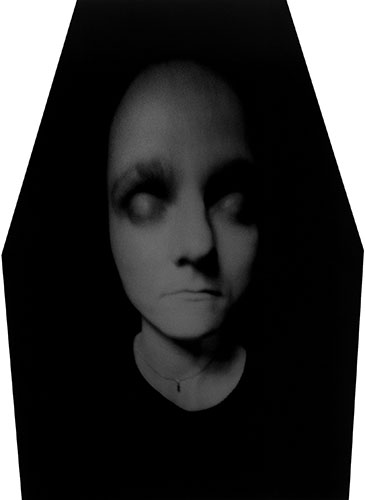 |
|
georgia Krawiec EXodus 8 (fragment) |
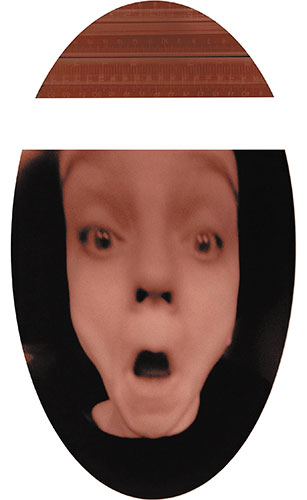 |
| georgia Krawiec EXodus 5 |
Copyright ©2011 Galeria FF ŁDK and Authors |